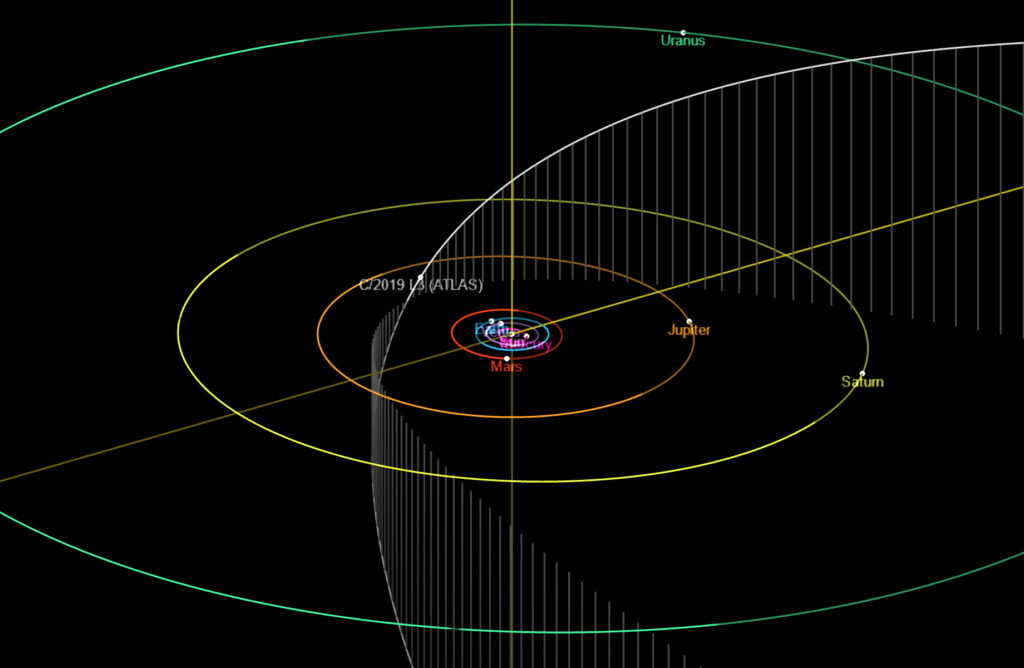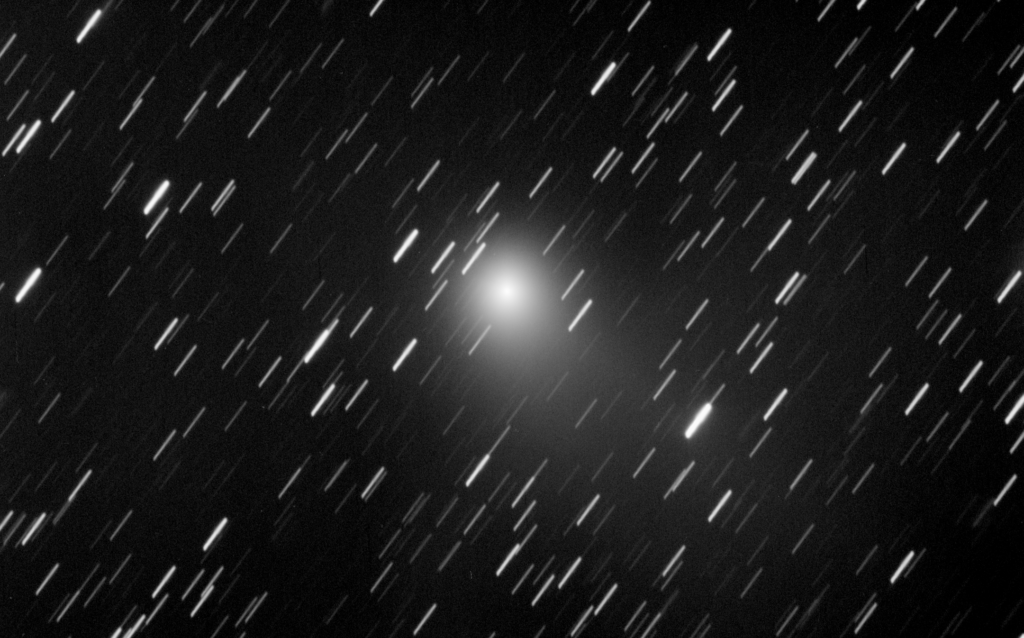Unfortunately, Comet Leonard is not visible from the PTO due to the surrounding tree line. Luckily, there is always more than one comet in the sky. FYI, as of today (24 Dec 2021) there are more than 900 objects in the MPC list of observable comets.
This is comet C/2019 L3. It was discovered on the 9th of June 2019 by the ATLAS program.
The comet is currently visible in the constellation Gemini heading towards perihelion on the 9th of January 2022. Right now, it is above the ecliptic but due to cross into the southern sky on the 18th of February next year.

C/2019 L3’s orbit viewed from above the solar system.
Graphic courtesy of the JPL Small-Body Database Browser.
As can be seen in the orbit diagram, the comet’s perihelion of 3.5 AU puts the closest it comes to the Sun well outside the orbit of Mars.

Comet c/2019 L3 (ATLAS) wasn’t really too hard to find, beings its in the constellation Gemini. The 7 degree field in my Astroscan Rich Field Telescope had the orange star Tau Geminid and a grouping of two dimmer orange stars with a dimmer yellow-white one all together. I could see a dimmer ‘star’ like object between between that asterism and Tau Gem, looking kind of hazy and ‘funky’. I put in my magnifying zoom-in eyepiece and there it is! Averted vision makes it look even more ‘nebulous’ and hazy, with hints of a tail sprouting out. Having just barely seen Comet Leonard last week, this a treat and a good way to kick off 2022.